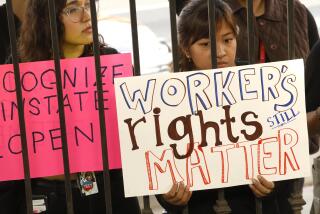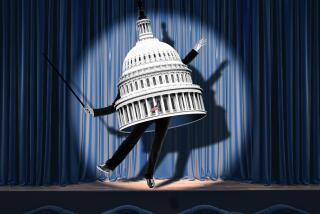New York Cultural Groups Facing 15% Cut in Funding
- Share via
NEW YORK — Leaders of New York’s diverse cultural institutions met Wednesday with Mayor Rudolph W. Giuliani’s administration to discuss how to deal with a 15% cut in city arts funding prompted by the World Trade Center attack.
Participants said the atmosphere of the closed-door conference at City Hall was supportive of the mayor.
“The arts community, like the rest of New York, is ready to go,” said Laura Jean Watters, executive director of the Council on the Arts and Humanities for Staten Island. “There is a lot of fierce resolve. Nothing is going to defeat us.”
Staten Island, a short ferry ride from the trade center, was particularly hard hit. More than 300 residents, many of them firefighters and police officers, were killed in the collapse of the twin towers.
“I think the administration has genuine interest [in] seeing the cultural organizations in the city not only healthy but thrive,” said Andrew Ackerman, executive director of the Children’s Museum of Manhattan. “I appreciate the honesty so we have a better chance to plan.”
Ackerman said that Deputy Mayor Anthony P. Coles, whose duties include cultural affairs, stressed at the meeting that the Giuliani administration realizes many people live in the city and come to New York because of its arts and culture.
“I think they have a long-term view for the health of that industry,” Ackerman said. “We still have to absorb a 15% cut on top of all other types of reductions in income because of the economy, because so much grant money has gone to relief efforts and because of the loss of tourism.”
The decline in revenue comes as the Children’s Museum of Manhattan has increased its staff to deal with the emotional fallout from the terrorism.
“We are dealing with a very highly traumatized public, adults and children,” Ackerman said. “I have never in my 25 years seen adults need to paint as much. . . . We are seeing a higher percentage of fathers coming in with their kids.”
“The mood of the meeting was definitely somber,” said Virginia Louloudes, executive director of A.R.T./New York, an advocacy organization for 409 nonprofit theaters. “These are very difficult times, and everyone is experiencing hardship.
“The board of education is prohibiting buses from taking students to any museum field trips,” Louloudes said. “So museums and arts organizations and theaters are seeing a huge drop in attendance, and bookings are canceled. Fewer tourists are coming too.”
The groups urged the Giuliani administration to ask the board to lift its ban on field trips and suggested trying to persuade the National Endowment for the Arts to increase its funding to institutions in the city because of hardships suffered in the World Trade Center’s aftermath.
At the Bronx Museum of the Arts, attendance has declined by 50% since the attack, compared to the same period a year ago.
“We have to take it on the chin like everybody else,” said museum executive director Jenny Dixon. “There is an atmosphere of uncertainty, and there is also an atmosphere [that] the arts can be a great healer for the fabric of the communities that make up New York and the economic tourist attractions of the city.”
Attendance dropped 40% at the Museum of Modern Art in Manhattan since the Sept. 11 disaster.
“This was a seismic event whose aftershocks are going to be felt for a long time,” said Glenn Lowry, MOMA’s director.
“Each of us faces a different kind of problem. Institutions like MOMA and the [Metropolitan Museum of Art] have large budgets, large staffs and large sources of revenues. They also have very large expense bases and are extremely sensitive to tourism.”
But, Lowry noted: “We are seeing an increase in attendance from where it was two weeks ago. I am hopeful attendance will pick up substantially.”
More to Read
The biggest entertainment stories
Get our big stories about Hollywood, film, television, music, arts, culture and more right in your inbox as soon as they publish.
You may occasionally receive promotional content from the Los Angeles Times.










